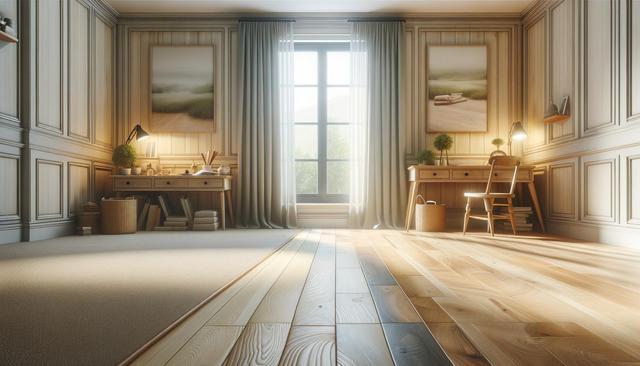
A Guide to Upgrade Your Home with Beautiful New Floors
Understanding Your Flooring Options
When upgrading your home floors, the first step is to understand the variety of materials available. Each type of flooring brings its own aesthetic and functional benefits, which can significantly impact the overall look and use of your space. Among the most popular choices are hardwood, laminate, vinyl, tile, and carpet. Hardwood floors are known for their timeless appeal and durability. They work well in living rooms, dining rooms, and bedrooms. Laminate flooring offers a similar appearance at a more affordable cost and with easier maintenance. Vinyl flooring has evolved to replicate wood and stone finishes while offering high water resistance, making it ideal for kitchens and bathrooms. Tile, both ceramic and porcelain, offers unmatched durability and design variety, while carpet remains a cozy choice, especially for bedrooms and basements.
Each type of flooring has unique characteristics to consider:
- Hardwood: Long-lasting, adds value to the home, requires occasional refinishing.
- Laminate: Scratch-resistant, budget-friendly, easy to install.
- Vinyl: Waterproof, versatile designs, soft underfoot.
- Tile: Durable, heat-resistant, suitable for wet areas.
- Carpet: Soft texture, sound-absorbing, available in many colors.
Matching Flooring to Your Lifestyle
To make the most of your investment, it’s important to select flooring that aligns with your household’s lifestyle. Consider how each room is used and who uses it. For example, households with children or pets benefit from materials that are easy to clean and resistant to scratches or spills. In this case, vinyl and laminate stand out as practical options. If comfort and warmth are priorities—especially in bedrooms or home offices—carpet may be the preferred choice. For high-traffic areas like hallways and kitchens, tile or hardwood floors are well-suited thanks to their durability.
Here are some lifestyle factors to guide your decision-making:
- Families with kids: Look for stain-resistant, tough surfaces like vinyl or laminate.
- Pet owners: Choose scratch-resistant and easy-to-clean materials.
- Entertainers: Durable and stylish options such as hardwood or tile make a strong impression.
- Budget-conscious homeowners: Laminate and vinyl offer excellent value.
Tailoring your flooring choice to your lifestyle helps ensure longevity, comfort, and satisfaction with your new floors.
Design and Aesthetic Considerations
New flooring has a significant impact on the visual tone of your home, so design and aesthetic preferences should be a key part of your selection process. Flooring can either blend seamlessly with your existing décor or act as a statement piece. Color, pattern, texture, and plank size all influence the final look. Light-colored floors can make small rooms appear larger, while dark tones offer a sense of warmth and sophistication. Meanwhile, wide planks can create a more open feeling, and herringbone or chevron patterns add a touch of elegance. It’s also important to consider how the flooring will coordinate with wall colors, furniture, and lighting.
When choosing flooring with aesthetics in mind, consider:
- Color palette: Harmonize with your home’s existing tones.
- Texture: Smooth, distressed, or hand-scraped finishes can change the mood of a room.
- Patterns: Diagonal or patterned layouts add visual interest.
- Continuity: Using the same flooring across multiple rooms enhances flow and cohesion.
Make use of samples and digital visualization tools to see how different floors will look in your actual space before making a final decision.
Preparing for Installation
Once you’ve chosen the flooring material and design, preparing for installation is the next critical step. Professional installation ensures precision and longevity, especially for materials like hardwood and tile. However, some flooring types such as laminate and vinyl planks are suitable for DIY enthusiasts due to their click-lock systems and straightforward installation. Regardless of the method, proper preparation is essential. This includes measuring the space accurately, removing old flooring, and checking for subfloor issues. A clean, level subfloor is vital to avoid problems like warping or movement after the new floor is in place.
Preparation steps may include:
- Clearing furniture and belongings from the installation area.
- Removing baseboards or trim, if necessary.
- Allowing the flooring to acclimate to room temperature and humidity.
- Inspecting and repairing the subfloor for moisture or damage.
Taking time to prepare properly can prevent costly issues down the line and help ensure a smooth, efficient installation process.
Maintaining Your New Floors
Once your beautiful new floors are installed, maintaining them is key to keeping them looking fresh for years to come. Each flooring type has its own care requirements. Hardwood floors benefit from regular sweeping and occasional mopping with wood-safe cleaners. Area rugs can help protect high-traffic zones. Tile floors should be cleaned with a pH-neutral solution to avoid damaging the grout. Vinyl and laminate floors require only basic sweeping and damp mopping but should be protected from scratching by using furniture pads. Carpets need consistent vacuuming and periodic deep cleaning to remove embedded dirt and allergens.
General maintenance tips include:
- Placing doormats at entrances to reduce dirt and moisture.
- Using felt pads under furniture legs to prevent scratches.
- Cleaning spills promptly to avoid staining or warping.
- Following manufacturer care guides for specific products.
Proper maintenance not only preserves the appearance of your floors but also extends their lifespan, making your investment worthwhile over the long term.
Conclusion: Creating a Home You Love
Upgrading your floors is a meaningful way to enhance the look, comfort, and value of your home. Whether you’re drawn to the classic charm of hardwood, the practicality of vinyl, or the elegance of tile, there are flooring options suited to every taste and lifestyle. By considering your household needs, aesthetic goals, and maintenance preferences, you can make a confident, informed choice. With the right preparation and care, your new floors will serve as a beautiful foundation for years of memories and daily living. Embrace the opportunity to refresh your space and create a home environment that truly reflects your style and comfort.


